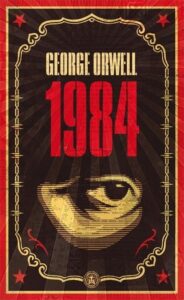Each member of Arlington’s artistic team brought in their unique ideas and references to incorporate into our storytelling. Through lots of discussion and collaboration, we were able to create a cohesive narrative that brought in each team member’s individual perspective. Here is a collection of images and cultural texts utilized by our production team that inspired us throughout the process of creating our virtual production of Arlington, A love Story.
Performance Artist: Martin O’Brien
 At the beginning of our production process, we were inspired by the work of British performance artist Martin O’Brien. His work explores ideas surrounding trauma, sickness, and isolation which we felt spoke to some of the major themes in Arlington. O’Brien utilizes severity in his depictions of suffering that don’t sugarcoat or romanticize the darker themes that he explores. We wanted our rendition of Arlington to connect to a similar energy of acknowledging the realities of humans in forced isolation. According to O’Brien’s website, “his work is an act of resistance to illness, an attempt at claiming agency and a celebration of his body. Martin loves his body and his work is a form of sufferance in order to survive.” You can learn more about O’Brien’s work here.
At the beginning of our production process, we were inspired by the work of British performance artist Martin O’Brien. His work explores ideas surrounding trauma, sickness, and isolation which we felt spoke to some of the major themes in Arlington. O’Brien utilizes severity in his depictions of suffering that don’t sugarcoat or romanticize the darker themes that he explores. We wanted our rendition of Arlington to connect to a similar energy of acknowledging the realities of humans in forced isolation. According to O’Brien’s website, “his work is an act of resistance to illness, an attempt at claiming agency and a celebration of his body. Martin loves his body and his work is a form of sufferance in order to survive.” You can learn more about O’Brien’s work here.
Nature vs manmade structures
 A major theme in Arlington is the division between the freedom of nature and the cold rigidity of man made structures. The buildings in Arlington are meant to maintain constant isolation from the outside world and intimidate anyone attempting to escape. The characters in Arlington use the natural world as a manifestation of their desire for freedom from isolation and surveillance. We wanted to highlight this division by including imagery of nature in our promotional materials, which we hope speak to the core desires of the characters. We chose to use lush forest greens contrasted with concrete grays to symbolize this division throughout our promotional material.
A major theme in Arlington is the division between the freedom of nature and the cold rigidity of man made structures. The buildings in Arlington are meant to maintain constant isolation from the outside world and intimidate anyone attempting to escape. The characters in Arlington use the natural world as a manifestation of their desire for freedom from isolation and surveillance. We wanted to highlight this division by including imagery of nature in our promotional materials, which we hope speak to the core desires of the characters. We chose to use lush forest greens contrasted with concrete grays to symbolize this division throughout our promotional material.
Dystopia in Literature
 We looked to previous examples of dystopia in theatre and literature in the development of our production. In our rehearsals and production meetings, we referenced novels like George Orwell’s 1985 and Ayn Rand’s Anthem as popular examples of the dystopian genre that permeate our cultural discourse. In our initial table reads of the play, we were able to find parallels between these works and moments in Arlington. It was interesting to find connections between previous literary works in the dystopian canon and Enda Walsh’s writing. Examples include the counting down of four-digit LED numbers in Arlington that feel reminiscent of the imagery of the telescreens in Orwell’s 1984.
We looked to previous examples of dystopia in theatre and literature in the development of our production. In our rehearsals and production meetings, we referenced novels like George Orwell’s 1985 and Ayn Rand’s Anthem as popular examples of the dystopian genre that permeate our cultural discourse. In our initial table reads of the play, we were able to find parallels between these works and moments in Arlington. It was interesting to find connections between previous literary works in the dystopian canon and Enda Walsh’s writing. Examples include the counting down of four-digit LED numbers in Arlington that feel reminiscent of the imagery of the telescreens in Orwell’s 1984.
This collection of ideas and references helped guide our process through cultural touchstones that connected our own experiences and interests with the world of the play. We hope that the audience will connect to these ideas and images when they watch Arlington!